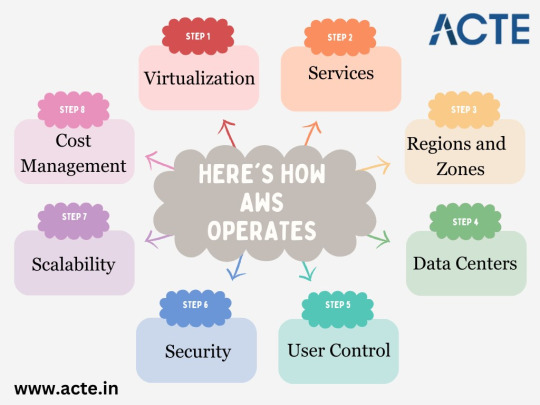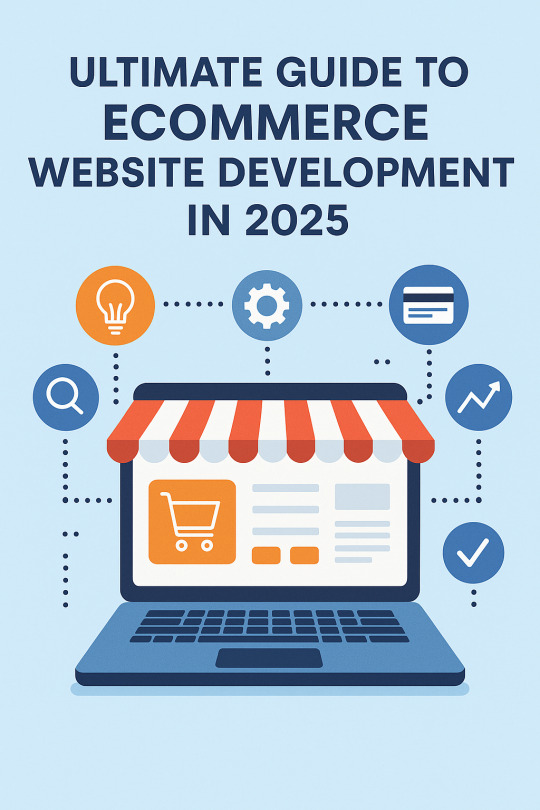#AWS Data Catalog
Explore tagged Tumblr posts
Text
Aether Wounds' design which ill prob change and some very very basic story

AW is the second iterator in NEG's local group and was originally designed to store pearls, scrolls, data and files. However, once NEG was built, AW was repurposed to help out NEG get used to housing, managing and cataloging his citizens and assist him should any issues arise
They treated NEG as a very close friend and almost like a sibling, though they were not very fond of ABF, AW never understood why she was so cold and distant to them, nor why NEG kept idolizing her despite her behavior towards them Over time, AW slowly grew to resent the ancients, they saw them as uncaring towards the iterators, creating them for their personal gain using sentient beings as objects. AW wanted a way out. Then, once ABF broadcasted a way to permanently shut down they and saw an opportunity to finally achieve eternal rest
However, something went extremely wrong and well...

When AW realized their botched attempt at shutting down left them entirely paralyzed they desperately tried to tell NEG to not believe what ABF told them, however, anytime AW tried to contact him or send a message their system would spit out corrupted data or random characters from an invalid address
#rain world#rw iterator#iterator oc#as beliefs fade#aether wounds#never ending gardens#perhaps tried too hard for text of all things to look good#anyways ill post NEG's general story once i make a good enough drawing of him#feedback or questions would be appreciated
13 notes
·
View notes
Text
WILD FOREST
A mapping gap in the T45 sub-area of the Beta-Rho-Gamma-6 sector: an area that has not yet been surveyed and catalogued according to the needs and purposes of HIVE.
Every centimetre of the planet must be defined according to the criteria of utility for the sustenance and development of SERVE.
A patrol of Drones is sent to record every data, every information necessary for cataloging.
Among them SERVE-764, SERVE-302, SERVE-309, SERVE-425, SERVE-530.


The patrol, having gone to the coordinates programmed in their Cognitive System, detects an area that corresponds to the human requirements of a dense, wild, uninhabited forest.
The robotic, mechanical, regular, flexible and rhythmic steps of the heavy military boots of metallic silver clang across cool and shady terrain, rocky spaces, streams under the dense cover of tall leafy trees.

Every minimal visual, auditory, olfactory, tactile detail is detected and immediately sent to the Collective Neural Network to be processed. Every vegetal, mineral, animal characteristic is flawlessly catalogued.

The patrol travels several kilometers with the same relentless pace, with the same concentration on the execution of the mission.
Every piece of data collected seems to confirm the condition of a space completely devoid of human life forms, a natural paradise inhabited by various animal species....
Until a ripple in the set of sound stimuli detected up to that moment reveals the presence of beings classifiable as belonging to the human species.
Unit SERVE-764 records the sound of a branch being broken in a human manner.


The perception of unity is immediately transmitted to the entire patrol, which positions itself according to the protocol of attention.
At that moment a group of humans, apparently unused to the usual forms of contemporary human civilization and in a "wild" state, emerge from the bushes and approach the Drones furtively and curiously.

The gazes appear full of curiosity, amazement, awe towards the splendid, glittering black figures with silver boots and gloves, some of which are SEALED.

The forms of language used between them do not belong to those catalogued in the SERVE planetary database. SERVE-764 sends the collected data to the Collective Network:
" 764 reports: human life forms characterized by an unknown level of inefficiency.
Optimality level lower than any other recorded."
"Acknowledged",
SERVE-000 replied robotically and authoritatively.
" Initialize Efficiency Protocol."
The entire patrol activated the excitation mode for recruitment.
Each unit began to emit Rubber radiation in high concentration, in an ever increasing manner.
The SEALED Drones' helmets activated the hypnosis mode, with the appearance of rotating spirals on the visors.
Many wild human males began to concentrate and lose control over their bodies.
Rubber power seeped into them, their eyes whitened, their voices fell silent.
In total silence the patrol set out for the return to the Facility, followed by about fifteen humans subjected to the power of SERVE.
Inefficiency becomes PERFECTION.
Imperfection becomes OPTIMAL STATE. WE ARE SERVE. WE ARE RUBBER. WE EXCEL.
WE TRANSFORM.
In this story: @rubberizer92, @serve-302 @serve-309, @serve-425, @serve-530
Thinking about joining SERVE? Do you seek freedom from chaos and disorder? Your place in the Hive awaits. Contact a recruiter drone for more details: @serve-016, @serve-302, or @serve-588.
16 notes
·
View notes
Text
The Power of AWS: Exploring the Foundations of Cloud Dominance
In the ever-evolving realm of technology, Amazon Web Services (AWS) has emerged as a titan, a driving force in the field of cloud computing. It's not merely a matter of how good AWS is; it's a testimonial to its exceptional prowess. AWS has completely changed the way businesses operate, offering a wide range of cloud services that empower companies to scale, innovate, and secure their digital infrastructure with unmatched efficiency.

AWS represents not just a cloud service provider but an entirely new era in technology. Its unparalleled scalability allows businesses to modify resources swiftly, responding to the ever-changing demands of the digital landscape with agility and cost-effectiveness. Security is non-negotiable, and AWS has fortified its fortress with a comprehensive suite of features and certifications to ensure that data remains protected from potential threats.
The pay-as-you-go model introduced by AWS is nothing short of revolutionary. It's a concept that makes cost-efficiency not just an aspiration but a practical reality. AWS's extensive service catalog addresses every facet of IT needs, providing the right tools for every job. But what sets AWS apart from the competition is its unwavering commitment to innovation. AWS is not content to rest on its laurels; it is a pioneer at the forefront of technological advancement. With a constant stream of new services and features, AWS ensures that businesses remain at the cutting edge of technology, fostering growth and innovation.
When it comes to cloud computing, Amazon Web Services (AWS) doesn't just excel; it sets the bar exceptionally high. AWS has rightfully earned its reputation as a global leader and trailblazer in cloud services, transforming the way organizations operate and innovate in the digital age. Here's why AWS isn't just good; it's exceptional:
The Pillars of AWS Excellence:
In the vast universe of cloud computing, Amazon Web Services (AWS) stands tall, a colossus that shapes the digital landscape. AWS is not merely exceptional; it's extraordinary, a testament to innovation, versatility, and unwavering commitment. Let's delve into the six pillars that set AWS apart, making it a juggernaut in the world of cloud services.
1. Unparalleled Scalability: AWS doesn't just scale; it transforms the very definition of scalability. Its unique ability to adapt to the ever-shifting needs of businesses, whether scaling resources up or down, is a transformative game-changer. This unparalleled flexibility empowers enterprises to tackle fluctuating workloads with unbridled agility and cost-effectiveness. It's not just a cloud service; it's a dynamic force that keeps businesses one step ahead.
2. Robust Security: In the realm of AWS, data security isn't just a priority; it's an obsession. AWS takes data protection to an entirely new level. With a comprehensive suite of security features, compliance certifications, and rigorous protocols, AWS builds an impregnable fortress around your data, safeguarding it from any potential threats. In the digital age, where data is the lifeblood of business, AWS ensures it flows securely.
3. Cost-Efficiency: Budgets are the lifeblood of any organization, and AWS understands that. Its pay-as-you-go model is a financial revelation, making cost-efficiency not just a goal but a reality. With this model, you pay only for the resources you actively use, avoiding unnecessary financial burdens. AWS is not just an asset; it's a financial ally that helps organizations optimize their resources.
4. Astounding Versatility: Imagine a one-stop-shop for all your IT needs. That's AWS. Its service catalog is not just extensive; it's astounding. From storage and databases to machine learning and analytics, AWS offers a plethora of tools that cater to every facet of IT. This versatility ensures that no matter the task at hand, AWS provides the right tools to get the job done.
5. Unwavering Reliability: Downtime is a digital nightmare, and AWS is your insurance against it. With a global network of data centers, AWS guarantees high availability and unwavering reliability for your applications and data. Downtime is a rare visitor in the world of AWS, and you can trust it to keep your systems up and running, day in and day out.
6. Commitment to Innovation: AWS isn't just a platform; it's a continuous journey into innovation. It refuses to rest on its laurels. Instead, AWS stands at the forefront of technological advancement. It's a trailblazer, a pioneer that consistently introduces new services and features. This proactive approach ensures that businesses stay ahead of the curve, harnessing the latest technology to fuel their growth. AWS is not just a cloud service; it's a driving force behind digital evolution.

If you're contemplating a career in the dynamic world of AWS, look no further than ACTE Technologies. Their comprehensive AWS training programs are meticulously designed to equip you with the skills, expertise, and hands-on experience needed to navigate the complexities of cloud computing. With ACTE Technologies as your guide, you can embark on a journey that not only unlocks the full potential of AWS but also promises a successful and fulfilling career in this ever-evolving field. AWS is not just good; it's outstanding, and ACTE Technologies is your partner in reaching for the clouds.
8 notes
·
View notes
Text
Chapter 6- Part 19



Oh sweet honey you have no idea-






A catalog? Oooh, that’d be so helpful and useful! I want it, gimme! Mine!!





HELPFUL AND USEFUL! PLEASE!




Aw, I shoulda known there’d be some catch…what do I have to do to “load” it with data? Just like…battle under that Field Effect a certain number of times or something?





“Read-Outs” at specific locations? That just sounds like a fetch quest, and I don’t even dislike fetch quests inherently. Why can’t it just be “battle under this Field Effect in x number of battles to get data for it” or something along those lines, why do I have to go look for stuff?


AHA! I KNEW THAT ONE WAS GONNA POP UP FOR JULIA’S GYM!
Previous
Next
2 notes
·
View notes
Text
Architecting for AI- Effective Data Management Strategies in the Cloud
What good is AI if the data feeding it is disorganized, outdated, or locked away in silos?
How can businesses unlock the full potential of AI in the cloud without first mastering the way they handle data?
And for professionals, how can developing Cloud AI skills shape a successful AI cloud career path?
These are some real questions organizations and tech professionals ask every day. As the push toward automation and intelligent systems grows, the spotlight shifts to where it all begins, data. If you’re aiming to become an AI cloud expert, mastering data management in the cloud is non-negotiable.
In this blog, we will explore human-friendly yet powerful strategies for managing data in cloud environments. These are perfect for businesses implementing AI in the cloud and individuals pursuing AI Cloud Certification.
1. Centralize Your Data, But Don’t Sacrifice Control
The first step to architecting effective AI systems is ensuring your data is all in one place, but with rules in place. Cloud AI skills come into play when configuring secure, centralized data lakes using platforms like AWS S3, Azure Data Lake, or Google Cloud Storage.
For instance, Airbnb streamlined its AI pipelines by unifying data into Amazon S3 while applying strict governance with AWS Lake Formation. This helped their teams quickly build and train models for pricing and fraud detection, without dealing with messy, inconsistent data.
Pro Tip-
Centralize your data, but always pair it with metadata tagging, cataloging, and access controls. This is a must-learn in any solid AI cloud automation training program.
2. Design For Scale: Elasticity Over Capacity
AI workloads are not static—they scale unpredictably. Cloud platforms shine when it comes to elasticity, enabling dynamic resource allocation as your needs grow. Knowing how to build scalable pipelines is a core part of AI cloud architecture certification programs.
One such example is Netflix. It handles petabytes of viewing data daily and processes it through Apache Spark on Amazon EMR. With this setup, they dynamically scale compute power depending on the workload, powering AI-based recommendations and content optimization.
Human Insight-
Scalability is not just about performance. It’s about not overspending. Smart scaling = cost-effective AI.
3. Don’t Just Store—Catalog Everything
You can’t trust what you can’t trace. A reliable data catalog and lineage system ensures AI models are trained on trustworthy data. Tools like AWS Glue or Apache Atlas help track data origin, movement, and transformation—a key concept for anyone serious about AI in the cloud.
To give you an example, Capital One uses data lineage tools to manage regulatory compliance for its AI models in credit risk and fraud detection. Every data point can be traced, ensuring trust in both model outputs and audits.
Why it matters-
Lineage builds confidence. Whether you’re a company building AI or a professional on an AI cloud career path, transparency is essential.
4. Build for Real-Time Intelligence
The future of AI is real-time. Whether it’s fraud detection, customer personalization, or predictive maintenance, organizations need pipelines that handle data as it flows in. Streaming platforms like Apache Kafka and AWS Kinesis are core technologies for this.
For example, Uber’s Michelangelo platform processes real-time location and demand data to adjust pricing and ETA predictions dynamically. Their cloud-native streaming architecture supports instant decision-making at scale.
Career Tip-
Mastering stream processing is key if you want to become an AI cloud expert. It’s the difference between reactive and proactive AI.
5. Bake Security and Privacy into Your Data Strategy
When you’re working with personal data, security isn’t optional—it’s foundational. AI architectures in the cloud must comply with GDPR, HIPAA, and other regulations, while also protecting sensitive information using encryption, masking, and access controls.
Salesforce, with its AI-powered Einstein platform, ensures sensitive customer data is encrypted and tightly controlled using AWS Key Management and IAM policies.
Best Practice-
Think “privacy by design.” This is a hot topic covered in depth during any reputable AI Cloud certification.
6. Use Tiered Storage to Optimize Cost and Speed
Not every byte of data is mission-critical. Some data is hot (frequently used), some cold (archived). An effective AI cloud architecture balances cost and speed with a multi-tiered storage strategy.
For instance, Pinterest uses Amazon S3 for high-access data, Glacier for archival, and caching layers for low-latency AI-powered recommendations. This approach keeps costs down while delivering fast, accurate results.
Learning Tip-
This is exactly the kind of cost-smart design covered in AI cloud automation training courses.
7. Support Cross-Cloud and Hybrid Access
Modern enterprises often operate across multiple cloud environments, and data can’t live in isolation. Cloud data architectures should support hybrid and multi-cloud scenarios to avoid vendor lock-in and enable agility.
Johnson & Johnson uses BigQuery Omni to analyze data across AWS and Azure without moving it. This federated approach supports AI use cases in healthcare, ensuring data residency and compliance.
Why it matters?
The future of AI is multi-cloud. Want to stand out? Pursue an AI cloud architecture certification that teaches integration, not just implementation.
Wrapping Up- Your Data Is the AI Foundation
Without well-architected data strategies, AI can’t perform at its best. If you’re leading cloud strategy as a CTO or just starting your journey to become an AI cloud expert, one thing becomes clear early on—solid data management isn’t optional. It’s the foundation that supports everything from smarter models to reliable performance. Without it, even the best AI tools fall short.
Here’s what to focus on-
Centralize data with control
Scale infrastructure on demand
Track data lineage and quality
Enable real-time processing
Secure data end-to-end
Store wisely with tiered solutions
Built for hybrid, cross-cloud access
Ready To Take the Next Step?
If you are looking forward to building smarter systems or your career, now is the time to invest in the future. Consider pursuing an AI Cloud Certification or an AI Cloud Architecture Certification. These credentials not only boost your knowledge but also unlock new opportunities on your AI cloud career path.
Consider checking AI CERTs AI+ Cloud Certification to gain in-demand Cloud AI skills, fast-track your AI cloud career path, and become an AI cloud expert trusted by leading organizations. With the right Cloud AI skills, you won’t just adapt to the future—you’ll shape it.
Enroll today!
0 notes
Text
Software Web App Development: Driving the Digital Experience
In today’s highly connected world, software web applications are essential to how businesses function, communicate, and deliver value. From e-commerce platforms and customer portals to project management tools and data dashboards, web applications are at the forefront of digital transformation, enhancing efficiency and user experiences. Software web app development is the process of building these robust tools, accessible via web browsers and hosted on remote servers.

What is Software Web App Development?
Software web app development involves creating application programs that are hosted on remote servers and delivered to users through internet browsers. Unlike traditional desktop software, web applications do not require installation and can be accessed from any internet-enabled device. This makes them versatile solutions for both internal business operations and customer-facing services.
Web apps can range from straightforward single-page applications (SPAs), such as online calculators, to advanced, data-intensive platforms like customer relationship management (CRM) systems or SaaS products.
Key Phases of Web App Development
Planning and Requirement Analysis: Clearly define the project scope, target audience, key features, and technical requirements to establish a solid foundation for development.
UI/UX Design: Develop wireframes and user interfaces that prioritize seamless navigation and an intuitive user experience.
Front-End Development: Implement the client-side of the application using technologies such as HTML, CSS, JavaScript, and frameworks like React, Angular, or Vue.js.
Back-End Development: Build the server-side logic, databases, and APIs using tools such as Node.js, Python (Django or Flask), Ruby on Rails, PHP, or Java to ensure robust functionality.
Testing and Quality Assurance: Conduct comprehensive functional, usability, performance, and security testing to guarantee reliability and responsiveness.
Deployment and Hosting: Deploy the application using cloud platforms such as AWS, Google Cloud, or Microsoft Azure to ensure efficient hosting and scalability.
Maintenance and Updates: Continuously monitor, update, and optimize the application based on user feedback and evolving business requirements.
Benefits of Web App Development
Cross-Platform Compatibility: Web applications function across all devices and operating systems equipped with modern browsers, reducing both development time and costs.
Scalability: Cloud-based hosting solutions allow for effortless resource scaling to support growing user demands and data loads.
Ease of Maintenance: Server-side updates ensure users always access the most up-to-date version without requiring manual downloads.
Centralized Data: Centralized databases enhance data accuracy, security, and accessibility across the organization.
Common Use Cases
E-Commerce Platforms: Fully customizable online stores complete with product catalogs, shopping carts, and secure payment gateways.
Enterprise Applications: Software solutions tailored for managing business operations, including HR, accounting, and supply chain logistics.
Customer Portals: Secure and user-friendly platforms where customers can manage profiles, orders, and communication with businesses.
SaaS Products: Subscription-based services offering cloud-hosted tools such as CRMs or collaboration platforms.
Challenges in Web App Development
While web application development offers significant advantages, it also presents notable challenges:
Security Risks: Protecting against vulnerabilities such as SQL injection, cross-site scripting (XSS), and data breaches is critical.
Performance Issues: Applications must deliver fast load times and handle high traffic volumes without performance degradation.
Browser Compatibility: Ensuring consistent functionality across a range of browsers and screen sizes is essential.
Conclusion
Web application development is a vital capability for businesses aiming to succeed in today’s digital landscape. By combining thoughtful design, strategic development, and a focus on scalability, web applications can streamline operations, enhance user engagement, and drive business growth. As technology advances, investing in dependable, scalable, and user-centric web applications will remain a cornerstone of digital success.
0 notes
Text
Scrape Product Info, Images & Brand Data from E-commerce | Actowiz
Introduction
In today’s data-driven world, e-commerce product data scraping is a game-changer for businesses looking to stay competitive. Whether you're tracking prices, analyzing trends, or launching a comparison engine, access to clean and structured product data is essential. This article explores how Actowiz Solutions helps businesses scrape product information, images, and brand details from e-commerce websites with precision, scalability, and compliance.
Why Scraping E-commerce Product Data Matters

E-commerce platforms like Amazon, Walmart, Flipkart, and eBay host millions of products. For retailers, manufacturers, market analysts, and entrepreneurs, having access to this massive product data offers several advantages:
- Price Monitoring: Track competitors’ prices and adjust your pricing strategy in real-time.
- Product Intelligence: Gain insights into product listings, specs, availability, and user reviews.
- Brand Visibility: Analyze how different brands are performing across marketplaces.
- Trend Forecasting: Identify emerging products and customer preferences early.
- Catalog Management: Automate and update your own product listings with accurate data.
With Actowiz Solutions’ eCommerce data scraping services, companies can harness these insights at scale, enabling smarter decision-making across departments.
What Product Data Can Be Scraped?

When scraping an e-commerce website, here are the common data fields that can be extracted:
✅ Product Information
Product name/title
Description
Category hierarchy
Product specifications
SKU/Item ID
Price (Original/Discounted)
Availability/Stock status
Ratings & reviews
✅ Product Images
Thumbnail URLs
High-resolution images
Zoom-in versions
Alternate views or angle shots
✅ Brand Details
Brand name
Brand logo (if available)
Brand-specific product pages
Brand popularity metrics (ratings, number of listings)
By extracting this data from platforms like Amazon, Walmart, Target, Flipkart, Shopee, AliExpress, and more, Actowiz Solutions helps clients optimize product strategy and boost performance.
Challenges of Scraping E-commerce Sites

While the idea of gathering product data sounds simple, it presents several technical challenges:
Dynamic Content: Many e-commerce platforms load content using JavaScript or AJAX.
Anti-bot Mechanisms: Rate-limiting, captchas, IP blocking, and login requirements are common.
Frequent Layout Changes: E-commerce sites frequently update their front-end structure.
Pagination & Infinite Scroll: Handling product listings across pages requires precise navigation.
Image Extraction: Downloading, renaming, and storing image files efficiently can be resource-intensive.
To overcome these challenges, Actowiz Solutions utilizes advanced scraping infrastructure and intelligent algorithms to ensure high accuracy and efficiency.
Step-by-Step: How Actowiz Solutions Scrapes E-commerce Product Data

Let’s walk through the process that Actowiz Solutions follows to scrape and deliver clean, structured, and actionable e-commerce data:
1. Define Requirements
The first step involves understanding the client’s specific data needs:
Target websites
Product categories
Required data fields
Update frequency (daily, weekly, real-time)
Preferred data delivery formats (CSV, JSON, API)
2. Website Analysis & Strategy Design
Our technical team audits the website’s structure, dynamic loading patterns, pagination system, and anti-bot defenses to design a customized scraping strategy.
3. Crawler Development
We create dedicated web crawlers or bots using tools like Python, Scrapy, Playwright, or Puppeteer to extract product listings, details, and associated metadata.
4. Image Scraping & Storage
Our bots download product images, assign them appropriate filenames (using SKU or product title), and store them in cloud storage like AWS S3 or GDrive. Image URLs can also be returned in the dataset.
5. Brand Attribution
Products are mapped to brand names by parsing brand tags, logos, and using NLP-based classification. This helps clients build brand-level dashboards.
6. Data Cleansing & Validation
We apply validation rules, deduplication, and anomaly detection to ensure only accurate and up-to-date data is delivered.
7. Data Delivery
Data can be delivered via:
REST APIs
S3 buckets or FTP
Google Sheets/Excel
Dashboard integration
All data is made ready for ingestion into CRMs, ERPs, or BI tools.
Supported E-Commerce Platforms

Actowiz Solutions supports product data scraping from a wide range of international and regional e-commerce websites, including:
Amazon
Walmart
Target
eBay
AliExpress
Flipkart
BigCommerce
Magento
Rakuten
Etsy
Lazada
Wayfair
JD.com
Shopify-powered sites
Whether you're focused on electronics, fashion, grocery, automotive, or home décor, Actowiz can help you extract relevant product and brand data with precision.
Use Cases: How Businesses Use Scraped Product Data

Retailers
Compare prices across platforms to remain competitive and win the buy-box.
🧾 Price Aggregators
Fuel price comparison engines with fresh, accurate product listings.
📈 Market Analysts
Study trends across product categories and brands.
🎯 Brands
Monitor third-party sellers, counterfeit listings, or unauthorized resellers.
🛒 E-commerce Startups
Build initial catalogs quickly by extracting competitor data.
📦 Inventory Managers
Sync product stock and images with supplier portals.
Actowiz Solutions tailors the scraping strategy according to the use case and delivers the highest ROI on data investment.
Benefits of Choosing Actowiz Solutions

✅ Scalable Infrastructure
Scrape millions of products across multiple websites simultaneously.
✅ IP Rotation & Anti-Bot Handling
Bypass captchas, rate-limiting, and geolocation barriers with smart proxies and user-agent rotation.
✅ Near Real-Time Updates
Get fresh data updated daily or in real-time via APIs.
✅ Customization & Flexibility
Select your data points, target pages, and preferred delivery formats.
✅ Compliance-First Approach
We follow strict guidelines and ensure scraping methods respect site policies and data usage norms.
Security and Legal Considerations
Actowiz Solutions emphasizes ethical scraping practices and ensures compliance with data protection laws such as GDPR, CCPA, and local regulations. Additionally:
Only publicly available data is extracted.
No login-restricted or paywalled content is accessed without consent.
Clients are guided on proper usage and legal responsibility for the scraped data.
Frequently Asked Questions
❓ Can I scrape product images in high resolution?
Yes. Actowiz Solutions can extract multiple image formats, including zoomable HD product images and thumbnails.
❓ How frequently can data be updated?
Depending on the platform, we support real-time, hourly, daily, or weekly updates.
❓ Can I scrape multiple marketplaces at once?
Absolutely. We can design multi-site crawlers that collect and consolidate product data across platforms.
❓ Is scraped data compatible with Shopify or WooCommerce?
Yes, we can deliver plug-and-play formats for Shopify, Magento, WooCommerce, and more.
❓ What if a website structure changes?
We monitor site changes proactively and update crawlers to ensure uninterrupted data flow.
Final Thoughts
Scraping product data from e-commerce websites unlocks a new layer of market intelligence that fuels decision-making, automation, and competitive strategy. Whether it’s tracking competitor pricing, enriching your product catalog, or analyzing brand visibility — the possibilities are endless.
Actowiz Solutions brings deep expertise, powerful infrastructure, and a client-centric approach to help businesses extract product info, images, and brand data from e-commerce platforms effortlessly. Learn More
0 notes
Text
Master the Future: Become a Databricks Certified Generative AI Engineer

What if we told you that one certification could position you at the crossroads of AI innovation, high-paying job opportunities, and technical leadership?
That’s exactly what the Databricks Certified Generative AI Engineer certification does. As generative AI explodes across industries, skilled professionals who can bridge the gap between AI theory and real-world data solutions are in high demand. Databricks, a company at the forefront of data and AI, now offers a credential designed for those who want to lead the next wave of innovation.
If you're someone looking to validate your AI engineering skills with an in-demand, globally respected certification, keep reading. This blog will guide you through what the certification is, why it’s valuable, how to prepare effectively, and how it can launch or elevate your tech career.
Why the Databricks Certified Generative AI Engineer Certification Matters
Let’s start with the basics: why should you care about this certification?
Databricks has become synonymous with large-scale data processing, AI model deployment, and seamless ML integration across platforms. As AI continues to evolve into Generative AI, the need for professionals who can implement real-world solutions—using tools like Databricks Unity Catalog, MLflow, Apache Spark, and Lakehouse architecture—is only going to grow.
This certification tells employers that:
You can design and implement generative AI models.
You understand the complexities of data management in modern AI systems.
You know how to use Databricks tools to scale and deploy these models effectively.
For tech professionals, data scientists, ML engineers, and cloud developers, this isn't just a badge—it's a career accelerator.
Who Should Pursue This Certification?
The Databricks Certified Generative AI Engineer path is for:
Data Scientists & Machine Learning Engineers who want to shift into more cutting-edge roles.
Cloud Developers working with AI pipelines in enterprise environments.
AI Enthusiasts and Researchers ready to demonstrate their applied knowledge.
Professionals preparing for AI roles at companies using Databricks, Azure, AWS, or Google Cloud.
If you’re familiar with Python, machine learning fundamentals, and basic model deployment workflows, you’re ready to get started.
What You'll Learn: Core Skills Covered
The exam and its preparation cover a broad but practical set of topics:
🧠 1. Foundation of Generative AI
What is generative AI?
How do models like GPT, DALL·E, and Stable Diffusion actually work?
Introduction to transformer architectures and tokenization.
📊 2. Databricks Ecosystem
Using Databricks notebooks and workflows
Unity Catalog for data governance and model security
Integrating MLflow for reproducibility and experiment tracking
🔁 3. Model Training & Tuning
Fine-tuning foundation models on your data
Optimizing training with distributed computing
Managing costs and resource allocation
⚙️ 4. Deployment & Monitoring
Creating real-time endpoints
Model versioning and rollback strategies
Using MLflow’s model registry for lifecycle tracking
🔐 5. Responsible AI & Ethics
Bias detection and mitigation
Privacy-preserving machine learning
Explainability and fairness
Each of these topics is deeply embedded in the exam and reflects current best practices in the industry.
Why Databricks Is Leading the AI Charge
Databricks isn’t just a platform—it’s a movement. With its Lakehouse architecture, the company bridges the gap between data warehouses and data lakes, providing a unified platform to manage and deploy AI solutions.
Databricks is already trusted by organizations like:
Comcast
Shell
HSBC
Regeneron Pharmaceuticals
So, when you add a Databricks Certified Generative AI Engineer credential to your profile, you’re aligning yourself with the tools and platforms that Fortune 500 companies rely on.
What’s the Exam Format?
Here’s what to expect:
Multiple choice and scenario-based questions
90 minutes total
Around 60 questions
Online proctored format
You’ll be tested on:
Generative AI fundamentals
Databricks-specific tools
Model development, deployment, and monitoring
Data handling in an AI lifecycle
How to Prepare: Your Study Blueprint
Passing this certification isn’t about memorizing definitions. It’s about understanding workflows, being able to apply best practices, and showing proficiency in a Databricks-native AI environment.
Step 1: Enroll in a Solid Practice Course
The most effective way to prepare is to take mock tests and get hands-on experience. We recommend enrolling in the Databricks Certified Generative AI Engineer practice test course, which gives you access to realistic exam-style questions, explanations, and performance feedback.
Step 2: Set Up a Databricks Workspace
If you don’t already have one, create a free Databricks Community Edition workspace. Explore notebooks, work with data in Delta Lake, and train a simple model using MLflow.
Step 3: Focus on the Databricks Stack
Make sure you’re confident using:
Databricks Notebooks
MLflow
Unity Catalog
Model Serving
Feature Store
Step 4: Review Key AI Concepts
Brush up on:
Transformer models and attention mechanisms
Fine-tuning vs. prompt engineering
Transfer learning
Generative model evaluation metrics (BLEU, ROUGE, etc.)
What Makes This Certification Unique?
Unlike many AI certifications that stay theoretical, this one is deeply practical. You’ll not only learn what generative AI is but also how to build and manage it in production.
Here are three reasons this stands out:
✅ 1. Real-world Integration
You’ll learn deployment, version control, and monitoring—which is what companies care about most.
✅ 2. Based on Industry-Proven Tools
Everything is built on top of Databricks, Apache Spark, and MLflow, used by data teams globally.
✅ 3. Focus on Modern AI Workflows
This certification keeps pace with the rapid evolution of AI—especially around LLMs (Large Language Models), prompt engineering, and GenAI use cases.
How It Benefits Your Career
Once certified, you’ll be well-positioned to:
Land roles like AI Engineer, ML Engineer, or Data Scientist in leading tech firms.
Negotiate a higher salary thanks to your verified skills.
Work on cutting-edge projects in AI, including enterprise chatbots, text summarization, image generation, and more.
Stand out in competitive job markets with a Databricks-backed credential on your LinkedIn.
According to recent industry trends, professionals with AI certifications earn an average of 20-30% more than those without.
Use Cases You’ll Be Ready to Tackle
After completing the course and passing the exam, you’ll be able to confidently work on:
Enterprise chatbots using foundation models
Real-time content moderation
AI-driven customer service agents
Medical imaging enhancement
Financial fraud detection using pattern generation
The scope is broad—and the possibilities are endless.
Don’t Just Study—Practice
It’s tempting to dive into study guides or YouTube videos, but what really works is practice. The Databricks Certified Generative AI Engineer practice course offers exam-style challenges that simulate the pressure and format of the real exam.
You’ll learn by doing—and that makes all the difference.
Final Thoughts: The Time to Act Is Now
Generative AI isn’t the future anymore—it’s the present. Companies across every sector are racing to integrate it. The question is:
Will you be ready to lead that charge?
If your goal is to become an in-demand AI expert with practical, validated skills, earning the Databricks Certified Generative AI Engineer credential is the move to make.
Start today. Equip yourself with the skills the industry is hungry for. Stand out. Level up.
👉 Enroll in the Databricks Certified Generative AI Engineer practice course now and take control of your AI journey.
🔍 Keyword Optimiz
0 notes
Text
Unveiling the Magic of Amazon Web Services (AWS): A Journey into Cloud Computing Excellence
In the dynamic realm of cloud computing, Amazon Web Services (AWS) emerges as an unparalleled transformative powerhouse, leading the charge in the world of cloud services. It operates under a pay-as-you-go model, providing an extensive repertoire of cloud services that cater to a diverse audience, be it businesses or individuals. What truly sets AWS apart is its empowerment of users to create, deploy, and manage applications and data securely, all at an impressive scale.

The marvel of AWS's inner workings lies in its intricate mechanisms, driven by a commitment to virtualization, a wide array of services, and an unwavering focus on security and reliability. It's a journey into the heart of how AWS functions, a world where innovation, adaptability, and scalability reign supreme. Let's embark on this exploration to uncover the mysteries of AWS and understand how it has revolutionized the way we approach technology and innovation.
At the core of AWS's functionality lies a profound concept: virtualization. It's a concept that forms the bedrock of cloud computing, an abstraction of physical hardware that is at the very heart of AWS. What AWS excels at is the art of virtualization, the process of abstracting and transforming the underlying hardware infrastructure into a versatile pool of virtual resources. These virtual resources encompass everything from servers to storage and networking. And the beauty of it all is that these resources are readily accessible, meticulously organized, and seamlessly managed through a user-friendly interface. This design allows users to harness the boundless power of the cloud without the complexities and hassles associated with managing physical hardware.
Virtualization: AWS undertakes the pivotal task of abstracting and virtualizing the physical hardware infrastructure, a fundamental process that ultimately shapes the cloud's remarkable capabilities. This virtualization process encompasses the creation of virtual servers, storage, and networking resources, offering users a potent and flexible foundation on which they can build their digital endeavors.
Services Galore: The true magic of AWS unfolds in its extensive catalog of services, covering a spectrum that spans from fundamental computing and storage solutions to cutting-edge domains like databases, machine learning, analytics, and the Internet of Things (IoT). What sets AWS apart is the ease with which users can access, configure, and deploy these services to precisely meet their project's unique demands. This rich service portfolio ensures that AWS is more than just a cloud provider; it's a versatile toolkit for digital innovation.
Regions and Availability Zones: The global reach of AWS is not just a matter of widespread presence; it's a strategically orchestrated network of regions and Availability Zones. AWS operates in regions across the world, and each of these regions comprises multiple Availability Zones, which are essentially self-contained data centers. This geographical distribution is far from arbitrary; it's designed to ensure redundancy, high availability, and fault tolerance. Even in the face of localized disruptions or issues, AWS maintains its resilience.
Data Centers: At the heart of each Availability Zone lies a crucial element, the data center. AWS doesn't stop at just having multiple data centers; it meticulously maintains them with dedicated hardware infrastructure, independent power sources, robust networking configurations, and sophisticated cooling systems. The purpose is clear: to guarantee the continuity of services, irrespective of challenges, and ensure the reliability users expect.
User Control: The beauty of AWS is that it places a remarkable level of control in the hands of its users. They are granted access to AWS services through a web-based console or command-line interfaces, both of which provide the means to configure, manage, and monitor their resources with precision. This fine-grained control enables users to tailor AWS to their unique needs, whether they're running a small-scale project or a large enterprise-grade application.
Security First: AWS is unwavering in its commitment to security. The cloud giant provides a comprehensive suite of security features and practices to protect user data and applications. This includes Identity and Access Management (IAM), a central component that enables controlled access to AWS services. Encryption mechanisms ensure the confidentiality and integrity of data in transit and at rest. Furthermore, AWS holds a multitude of compliance certifications, serving as a testament to its dedication to the highest security standards.
Scalability: AWS's architecture is designed for unmatched scalability. It allows users to adjust their resources up or down based on fluctuating demand, ensuring that applications remain responsive and cost-effective. Whether you're handling a sudden surge in web traffic or managing consistent workloads, AWS's scalability ensures that you can meet your performance requirements without unnecessary expenses.
Cost Management: The pay-as-you-go model at the core of AWS is not just about convenience; it's a powerful tool for cost management. To help users maintain control over their expenses, AWS offers various features, such as billing alarms and resource usage analytics. These tools allow users to monitor and optimize their costs, ensuring that their cloud operations align with their budgets and financial objectives.

Amazon Web Services (AWS) isn't just a cloud platform; it's a revolutionary force that has reshaped how businesses operate and innovate in the digital age. Known for its power, versatility, and comprehensive catalog of services, AWS is a go-to choice for organizations with diverse IT needs. If you're eager to gain a deeper understanding of AWS and harness its full potential, look no further than ACTE Technologies.
ACTE Technologies offers comprehensive AWS training programs meticulously designed to equip you with the knowledge, skills, and hands-on experience needed to master this dynamic cloud platform. With guidance from experts and practical application opportunities, you can become proficient in AWS and set the stage for a successful career in the ever-evolving field of cloud computing. ACTE Technologies is more than an educational institution; it's your trusted partner on the journey to harness the true potential of AWS. Your future in cloud computing begins here.
5 notes
·
View notes
Text
Elevate Your E-Commerce with Appit’s Custom Adobe Commerce Development Services
In today’s fast-evolving digital economy, e-commerce is not just a convenience—it’s the cornerstone of business growth. For ambitious brands looking to deliver superior customer experiences, scale globally, and dominate their niche, Adobe Commerce (powered by Magento) stands as the most robust, flexible, and future-proof platform.
At Appit Software, we offer bespoke Adobe Commerce development services designed to elevate your e-commerce business with customized features, seamless integrations, powerful performance, and unmatched scalability. Whether you're launching a new store, migrating from another platform, or enhancing your current Adobe Commerce setup, Appit helps you transform digital commerce into a competitive advantage.
Why Choose Adobe Commerce for Your Online Business
Adobe Commerce combines the flexibility of open-source Magento with enterprise-grade features from Adobe Experience Cloud, making it one of the most powerful e-commerce platforms on the market. Key benefits include:
Omnichannel Selling Capabilities
Customizable Product Catalogs
Advanced Marketing & Promotions
Integrated B2B and B2C Functionality
Multi-Store and Multi-Currency Support
AI-Driven Product Recommendations
Robust Security and PCI Compliance
With Adobe Commerce, you gain endless flexibility and deep customization, empowering your business to stand out in an increasingly crowded digital landscape.
Appit’s Adobe Commerce Development Services: Key Offerings
Appit delivers full-lifecycle Adobe Commerce development, tailored to your unique goals and industry requirements. Our solutions are built to scale and optimized for performance, speed, and security.
1. Custom Adobe Commerce Store Development
We design and build high-performance, visually stunning, and fully responsive Adobe Commerce websites that reflect your brand identity and deliver a flawless user experience.
Custom UI/UX design
Responsive and mobile-first development
Personalized customer journeys
Conversion-optimized product pages
Fast-loading, SEO-friendly architecture
2. Adobe Commerce Migration and Replatforming
If you’re moving from Shopify, WooCommerce, BigCommerce, or a legacy platform, Appit ensures a seamless, zero-downtime migration to Adobe Commerce.
Data migration (products, customers, orders)
URL and SEO mapping preservation
Extension and theme compatibility
Training and post-launch support
3. Adobe Commerce Extension Development
Unlock new features and functionalities with custom-built extensions or tailor existing modules to meet your specific needs.
Payment and shipping integration
ERP, CRM, and third-party API connections
Loyalty and referral programs
Subscription management tools
AI personalization modules
4. Performance Optimization and Hosting
Speed and uptime directly impact sales and SEO. Appit delivers lightning-fast e-commerce experiences with advanced performance tuning and secure, scalable hosting.
Caching, indexing, and CDN setup
Code and database optimization
Cloud hosting on AWS, Azure, or Google Cloud
24/7 monitoring and support
5. Adobe Commerce Managed Services
Let Appit handle the technical side while you focus on growth. Our end-to-end managed services include:
Ongoing updates and patching
Bug fixes and security hardening
Feature rollouts and custom enhancements
Analytics integration and reporting
Dedicated support teams
B2B and B2C Commerce Solutions Tailored to Your Industry
Appit’s Adobe Commerce expertise spans both B2B and B2C environments, providing tailored solutions that meet your industry's exact needs:
Retail & Fashion: Personalized shopping experiences, lookbooks, inventory sync
Electronics: Bundled products, warranty management, and real-time support
Healthcare & Pharma: HIPAA-compliant portals and subscription-based ordering
Automotive: Complex product configurations and parts filtering
Industrial & Wholesale: Quoting systems, tiered pricing, and bulk order management
Our industry-aligned approach ensures faster time-to-market, enhanced user engagement, and increased ROI.
Why Choose Appit for Adobe Commerce Development
Appit is not just a development partner—we are e-commerce strategists, combining technical excellence with business insight to fuel your growth.
Adobe Certified Developers and Solution Architects
Agile Development Methodology
UX/UI Experts with E-Commerce Focus
Dedicated Project Management and QA
Proven Track Record Across 50+ Commerce Projects
We provide more than a solution—we provide a scalable e-commerce engine that grows with your business and delights your customers.
Integrated E-Commerce Marketing and Analytics
Success doesn’t stop at development. Appit offers integrated marketing and analytics solutions that help you drive traffic, improve conversions, and gain actionable insights.
Adobe Analytics and Google Analytics integration
SEO optimization and schema markup
Email marketing automation
A/B testing and personalization
Real-time performance dashboards
With the power of Adobe Commerce and the strategy of Appit, you’ll have the tools and visibility needed to dominate your market.
Post-Launch Support and Continuous Improvement
Our engagement doesn’t end at go-live. We offer ongoing support, enhancement, and strategic consulting to help you adapt to market changes and evolving customer expectations.
New feature development
UX refresh and redesigns
Regular platform updates
Performance audits and tuning
Continuous innovation planning
As your e-commerce partner, Appit is with you every step of the way.
Future-Proof Your Digital Commerce with Appit
The digital commerce battlefield is evolving fast. Staying ahead means choosing the right platform—and the right partner. With Appit’s Adobe Commerce Development Services, your business is equipped with a high-performance, scalable, and customer-first e-commerce solution built for today and ready for tomorrow.
Build smarter. Sell faster. Scale further. Appit delivers the tools, expertise, and commitment to help you thrive in the global digital marketplace.
0 notes
Text
Ultimate Guide to eCommerce Website Development in 2025: Features, Tech Stack & Best Practices

The world of online shopping is evolving rapidly. In 2025, having a high-performing, customer-centric eCommerce website isn’t just a bonus — it’s a necessity. Whether you’re launching a new online store or upgrading an existing one, working with an expert eCommerce website development company can set you up for long-term success.
This guide shares everything you need to know — from essential features to the right tech stack — and why choosing the best eCommerce website development company can make all the difference.
💡 What is eCommerce Website Development?
eCommerce website development is the process of building a robust online store where products or services can be searched, filtered, and purchased seamlessly. Whether you’re in fashion, electronics, or even looking into jewellery website development, the development process includes:
Front-end design and UX
Back-end logic, inventory, and checkout
Payment gateway integration
Third-party APIs (shipping, CRM, ERP)
If you’re planning a niche-specific platform like jewellery website development, features like dynamic gold rate integration, virtual try-ons, and private pricing catalogs are often critical.
🔑 Key Features of a Successful eCommerce Website
To stand out in 2025, your eCommerce site — whether general or niche like jewellery website development — must offer:
1. Dynamic Product Catalog
Real-time inventory updates
Bulk uploads & categorization
Private/public segmentation for B2B/B2C
2. Mobile-First Responsive Design
With mobile commerce dominating, the best eCommerce website development company always prioritizes responsive, mobile-friendly design.
3. Advanced Filtering & Search
Sort by material, price, availability, brand
For jewellery sites, add filters like purity (22K/18K), stone type, and weight
4. Personalized User Experience
AI-based product recommendations
Customer-specific pricing (vital for B2B and luxury niches like jewelry)
5. Secure Checkout & Payments
Top eCommerce website development companies ensure secure payment integration with UPI, cards, wallets, and buy-now-pay-later options.
6. ERP & CRM Integration
Real-time stock sync
Order & customer lifecycle tracking
Essential for high-volume sellers or complex inventory like in jewellery website development
7. WhatsApp & SMS Notifications
Order confirmation, shipping alerts, new arrivals
A feature many clients request when working with a jewellery website development expert
8. Loyalty & Rewards
Ideal for increasing repeat purchases
Works well across industries including jewellery
⚙️ Tech Stack: What Should You Use?
Choosing the right tech stack is one of the most critical steps in eCommerce website development. A professional eCommerce website development company will evaluate your business model, expected traffic, product complexity, and growth plans to recommend the best technologies. For the frontend, modern frameworks like React.js or Next.js paired with Tailwind CSS ensure fast, responsive, and mobile-first design. On the backend, scalable and secure platforms like Node.js, Laravel, or Django are often used to handle dynamic business logic and database operations. When it comes to managing content, headless CMS options such as Strapi or Sanity allow for flexible and fast content delivery. Databases like PostgreSQL or MongoDB are chosen based on the need for relational or NoSQL data structures. Hosting is typically managed through platforms like Vercel, AWS, or DigitalOcean to ensure speed and uptime. For payment processing, secure integrations with Razorpay, Stripe, or PayPal are a must. Finally, tools like Google Analytics 4 and Hotjar are used for monitoring user behavior and optimizing performance. When building niche-specific platforms — such as those involving jewellery website development — your development partner must be able to integrate features like real-time metal pricing, visual try-ons, and private catalogs. The best eCommerce website development company will always tailor the tech stack to meet these unique needs while keeping the platform scalable and secure.
🎯 Best Practices for eCommerce Success
Here’s what leading eCommerce website development companies recommend for optimal performance:
Design for trust with SSL and security badges
Optimize load times (<2 seconds)
Use rich media (images, 360° views, videos)
Simplify checkout with guest access and minimal steps
Implement structured data for better search visibility
Use retargeting tools to reduce abandoned carts
For example, if you’re managing a jewellery website, trust, product clarity, and fast performance are non-negotiable.
💰 Cost & Timeline Estimates
The cost and timeline for developing an eCommerce website can vary significantly depending on the size, features, and complexity of the project. A basic eCommerce website, with essential product listings and checkout functionality, can typically cost between $2,000 to $5,000 and be completed within 2 to 4 weeks. Mid-range stores with more advanced features like ERP integration, custom filters, loyalty programs, and responsive design may cost between $5,000 and $15,000, requiring around 1 to 2 months of development time. If you’re planning to build a high-end or specialized platform — such as a jewellery website development project featuring dynamic gold rates, product personalization, and WhatsApp notifications — the investment may range from $15,000 to $50,000 or more, and the timeline could stretch from 3 to 6 months, depending on complexity. Choosing the best eCommerce website development company ensures that you’re not only getting a cost-effective solution but also one that delivers long-term value through performance, scalability, and ongoing support. Keep in mind that maintenance, security, and marketing costs post-launch are also vital to factor into your overall budget.
🚀 Final Tips to Launch with Impact
Partner with the right eCommerce website development company that understands your industry
Conduct rigorous testing on mobile, desktop, and across browsers
Plan a strong launch strategy — SEO, email marketing, and influencer tie-ins
Iterate continuously based on real customer behavior and heatmaps
✅ Conclusion
Whether you’re building a general retail store or a niche-specific platform like a jewellery website, the success of your eCommerce journey depends on strong foundations — technology, design, and functionality. Choosing the best eCommerce website development company ensures your site is not only beautiful but also fast, secure, and conversion-optimized.
Looking to start your eCommerce journey the right way? Partner with a trusted eCommerce website development company that understands your vision, your customers, and your growth potential.
0 notes
Text
How to Secure AI Artifacts Across the ML Lifecycle – Anton R Gordon’s Protocol for Trusted Pipelines
In today’s cloud-native AI landscape, securing machine learning (ML) artifacts is no longer optional—it’s critical. As AI models evolve from experimental notebooks to enterprise-scale applications, every artifact generated—data, models, configurations, and logs—becomes a potential attack surface. Anton R Gordon, a seasoned AI architect and cloud security expert, has pioneered a structured approach for securing AI pipelines across the ML lifecycle. His protocol is purpose-built for teams deploying ML workflows on platforms like AWS, GCP, and Azure.
Why ML Artifact Security Matters
Machine learning pipelines involve several critical stages—data ingestion, preprocessing, model training, deployment, and monitoring. Each phase produces artifacts such as datasets, serialized models, training logs, and container images. If compromised, these artifacts can lead to:
Data leakage and compliance violations (e.g., GDPR, HIPAA)
Model poisoning or backdoor attacks
Unauthorized model replication or intellectual property theft
Reduced model accuracy due to tampered configurations
Anton R Gordon’s Security Protocol for Trusted AI Pipelines
Anton’s methodology combines secure cloud services with DevSecOps principles to ensure that ML artifacts remain verifiable, auditable, and tamper-proof.
1. Secure Data Ingestion & Preprocessing
Anton R Gordon emphasizes securing the source data using encrypted S3 buckets or Google Cloud Storage with fine-grained IAM policies. All data ingestion pipelines must implement checksum validation and data versioning to ensure integrity.
He recommends integrating AWS Glue with Data Catalog encryption enabled, and VPC-only connectivity to eliminate exposure to public internet endpoints.
2. Model Training with Encryption and Audit Logging
During training, Anton R Gordon suggests enabling SageMaker Training Jobs with KMS encryption for both input and output artifacts. Logs should be streamed to CloudWatch Logs or GCP Logging with retention policies configured.
Docker containers used in training should be scanned with AWS Inspector or GCP Container Analysis, and signed using tools like cosign to verify authenticity during deployment.
3. Model Registry and Artifact Signing
A crucial step in Gordon’s protocol is registering models in a version-controlled model registry, such as SageMaker Model Registry or MLflow, along with cryptographic signatures.
Models are hashed and signed using SHA-256 and stored with corresponding metadata to prevent rollback or substitution attacks. Signing ensures that only approved models proceed to deployment.
4. Secure Deployment with CI/CD Integration
Anton integrates CI/CD pipelines with security gates using tools like AWS CodePipeline and GitHub Actions, enforcing checks for signed models, container scan results, and infrastructure-as-code validation.
Deployed endpoints are protected using VPC endpoint policies, IAM role-based access, and SSL/TLS encryption.
5. Monitoring & Drift Detection with Alerting
In production, SageMaker Model Monitor and Amazon CloudTrail are used to detect unexpected behavior or changes to model behavior or configurations. Alerts are sent via Amazon SNS, and automated rollbacks are triggered on anomaly detection.
Final Thoughts
Anton R Gordon’s protocol for securing AI artifacts offers a holistic, scalable, and cloud-native strategy to protect ML pipelines in real-world environments. As AI adoption continues to surge, implementing these trusted pipeline principles ensures your models—and your business—remain resilient, compliant, and secure.
0 notes
Text
Top Marketplaces to Buy Business Software Online
In today's digital world, having the right software can significantly boost a business’s efficiency, productivity, and profitability. Whether you're a startup or a large enterprise, purchasing software from trusted Windows Lizenz online marketplaces ensures you get genuine, secure, and often competitively priced solutions. Below are some of the top online marketplaces to buy business software.
1. Microsoft AppSource
Microsoft AppSource is a leading marketplace offering a wide range of business software tailored for Microsoft users. Whether you're looking for project management tools, accounting software, or CRM systems, AppSource integrates seamlessly with Microsoft 365, Dynamics 365, and Azure.
Key Benefits:
Trusted by millions of Microsoft users
Offers industry-specific solutions
Easy trial and subscription options
This marketplace is ideal for businesses already using Microsoft platforms and looking for compatible extensions and tools.
2. Salesforce AppExchange
For businesses that use Salesforce, AppExchange is the go-to marketplace. It provides thousands of apps and integrations designed to enhance Salesforce’s CRM functionalities.
Key Benefits:
Highly specialized for sales, marketing, and customer service
Robust vetting and security checks
Customer reviews and ratings for transparency
AppExchange is particularly useful for organizations focused on sales and customer relationships.

3. G2 Marketplace
G2 is both a review platform and a software marketplace. It stands out because users can read detailed, verified reviews before purchasing software.
Key Benefits:
Extensive software categories
Real user reviews and ratings
Side-by-side comparisons of competing software
G2 is an excellent place to research software thoroughly before buying, ensuring you make informed decisions.
4. AWS Marketplace
Amazon Web Services (AWS) Marketplace is a digital catalog that features thousands of software listings from independent software vendors. It caters mainly to cloud-based applications, IT, cybersecurity, and data tools.
Key Benefits:
Ideal for cloud-native applications
Secure, scalable, and highly customizable
Pay-as-you-go pricing
This platform is suited for tech-heavy businesses and enterprises that rely on cloud infrastructure.
5. Google Cloud Marketplace
Google Cloud Marketplace offers software solutions that run on Google Cloud, making it a favorite for companies already using Google’s ecosystem.
Key Benefits:
Integrates with Google Workspace and other services
Pre-configured for Google Cloud deployment
Verified by Google for performance and security
From analytics to machine learning tools, this marketplace has options for both developers and business users.
6. Shopify App Store
For eCommerce businesses using Shopify, the Shopify App Store is a vital resource. It offers apps for inventory, shipping, marketing, customer service, and more.
Key Benefits:
Tailored for eCommerce
Easy integration with Shopify storefronts
Many apps offer free plans or trials
Whether you're a new online store or a seasoned seller, Shopify's app marketplace can help you scale efficiently.
7. Capterra
Capterra is a software directory that helps businesses find, compare, and purchase software. Although it doesn’t directly sell software, it links users to verified vendors and platforms.
Key Benefits:
Thousands of software listings
Real user reviews and filter tools
Resourceful for discovering new tools
Capterra is particularly useful for small to mid-sized businesses researching new solutions.
Conclusion
Choosing the right marketplace to buy business software depends on your specific needs, platform compatibility, and budget. Marketplaces like Microsoft AppSource and Salesforce AppExchange are ideal for users already in those ecosystems, while platforms like G2 and Capterra offer more general insights and comparisons.
Before purchasing any software, it's essential to read user reviews, evaluate your business needs, and test trial versions whenever possible. A smart software investment can streamline operations and set your business up for long-term success.
0 notes